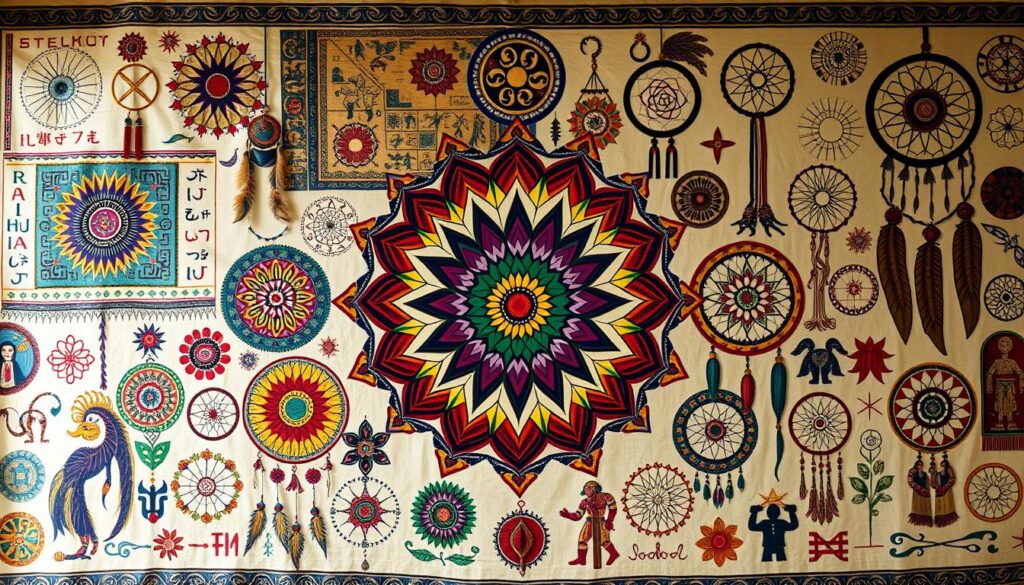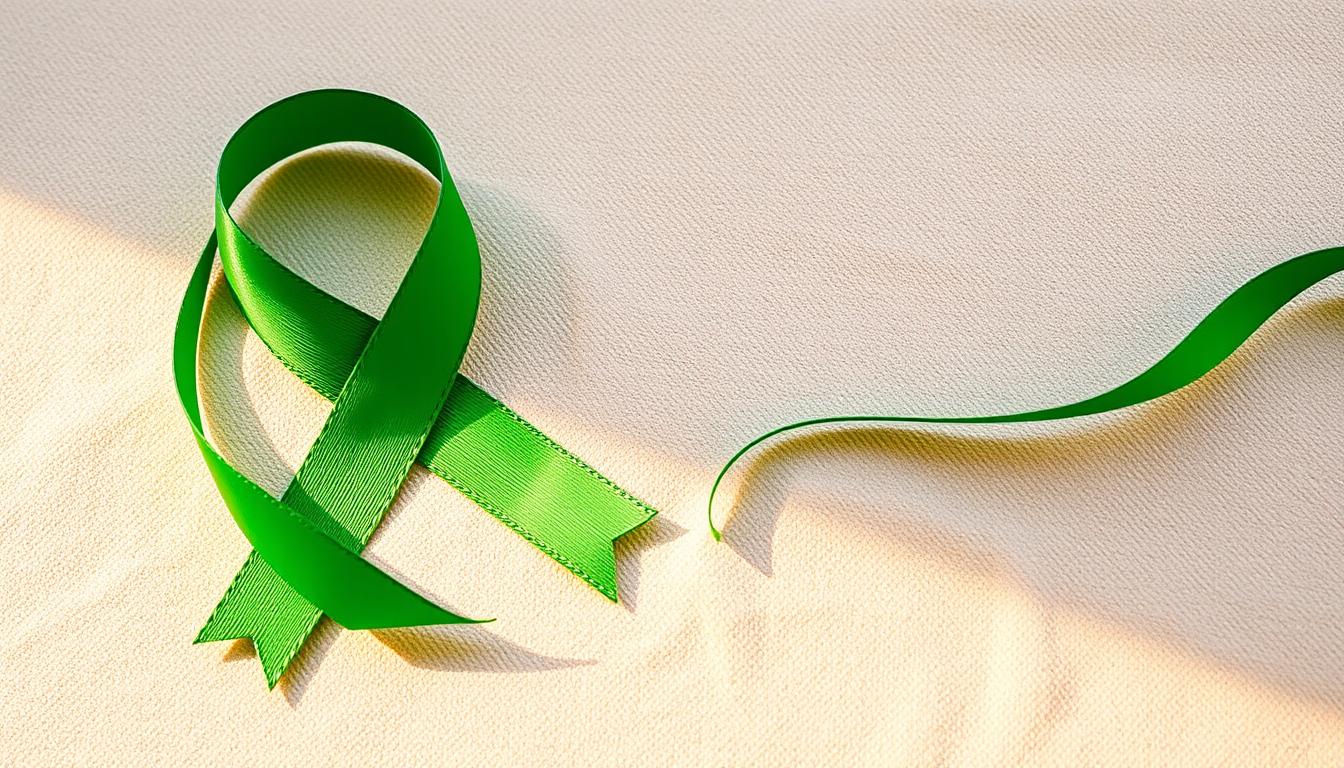The color green has become synonymous with mental health awareness, symbolizing growth, renewal, and the journey toward better wellbeing.
As we navigate the complexities of mental health, the significance of green and other colors in awareness campaigns cannot be overstated. These colors create powerful symbols that help reduce stigma and promote understanding.
The use of green in mental health awareness is more than just a visual representation; it represents the idea that individuals facing challenges can experience recovery and personal growth.
Key Takeaways
- The color green is internationally recognized as a symbol for mental health awareness.
- Green represents growth, renewal, and the journey toward better mental wellbeing.
- Mental health awareness colors help create a common visual language.
- These colors play a crucial role in raising visibility and fostering conversations.
- The significance of color in mental health awareness extends beyond simple visual representation.
The Significance of Green in Mental Health Awareness
Green has become a pivotal color in the realm of mental health awareness. This significance is reflected in various symbols and initiatives that have emerged to promote understanding and support for mental health.
The use of green in mental health awareness is not arbitrary. It represents growth, harmony, and balance, which are essential elements in the journey towards mental wellbeing.
Representing Mental Health
Green is often associated with feelings of calmness and serenity. In the context of mental health, it symbolizes hope and recovery. The choice of green as a representative color for mental health awareness is rooted in its positive connotations.
| Symbolism | Association |
|---|---|
| Growth | Personal development and progress |
| Harmony | Balance and stability |
| Balance | Emotional equilibrium |
The Mental Health Flag
The Mental Health Flag features different shades of green transitioning to yellow, symbolizing the journey from struggle to hope and recovery. This flag has become a powerful visual symbol that represents both individual journeys with mental health and collective advocacy efforts.
The gradient design of the flag acknowledges that mental health exists on a continuum, and its design intentionally avoids stigmatizing imagery, focusing instead on positive symbolism that promotes understanding and support.
By using green as a primary color, the Mental Health Flag creates a sense of community and shared purpose among those affected by mental health issues, fostering a supportive environment that encourages open discussion and advocacy.
Understanding the Green Ribbon Symbol
The green ribbon has become a universally recognized symbol for mental health awareness. By wearing or displaying a green ribbon, individuals show their support and encourage open conversations about depression, aiming to reduce the stigma surrounding it.
The color green serves as a visual reminder to prioritize mental health and fosters a more understanding and supportive society.
Green Ribbon Symbolism and History
The green ribbon is rich in symbolism and has a significant history tied to mental health awareness. It represents the movement towards reducing stigma associated with mental health conditions and promoting understanding and support.
How the Green Ribbon Promotes Mental Health Awareness
The green ribbon serves as a visible symbol that helps normalize conversations about mental health in everyday settings. It signals a willingness to discuss mental health openly, creating safe spaces for those who might be struggling.
- The green ribbon helps reduce stigma by demonstrating that mental health is a community concern deserving of public attention and support.
- Green ribbon campaigns often include educational components that increase public understanding of mental health conditions and available resources.
- The simplicity of the green ribbon makes it an accessible way for anyone to participate in mental health advocacy, regardless of their professional background or personal experience with mental health challenges.
By promoting awareness and encouraging open conversations, the green ribbon plays a crucial role in fostering a supportive environment for mental health.
The Psychology of Color and Mental Wellbeing
Understanding the psychology of color can provide valuable insights into its impact on mental health and wellbeing. Colors have the power to influence our emotions, energy levels, and overall mental state.
How Colors Affect Our Emotions
Colors can significantly affect our emotional states. For instance, blue is often associated with feelings of calmness and serenity, helping to reduce anxiety and stress. On the other hand, green is considered a symbol of growth, renewal, and harmony, promoting balance and soothing the mind.
Some key ways colors impact our emotions include:
- Influencing mood and emotional states
- Regulating energy levels
- Creating a sense of calm or stimulation
Color Therapy Benefits for Mental Health
Color therapy, or chromotherapy, is a practice that utilizes specific colors to potentially improve mental health conditions. It is believed to have a range of benefits for mental health, including reducing anxiety and stress, promoting relaxation, and improving overall wellbeing.
For those interested in exploring the intersection of mental health and symbolism further, you can check out anxiety tattoos and their meanings, which can serve as a form of personal expression and therapy.
Mental Health Awareness Campaigns and Colors

The role of color in mental health awareness campaigns is multifaceted, serving as a visual representation of support and advocacy. These campaigns often utilize specific colors to convey their messages and promote unity among participants.
Mental Health Month in May
Mental Health Month, observed in May, is a significant campaign that aims to raise awareness about mental health issues and promote mental wellbeing. During this month, various activities and initiatives are undertaken to educate the public about mental health.
Some key aspects of Mental Health Month include:
- Educational events and workshops focused on mental health topics.
- Campaigns to reduce stigma around mental illness.
- Promotion of mental health resources and support services.
By engaging communities and fostering open discussions, Mental Health Month contributes to a better understanding of mental health.
National Minority Mental Health Month
National Minority Mental Health Month is observed each July in the United States. This campaign specifically addresses the mental health disparities affecting racial and ethnic minority communities.
Key objectives of National Minority Mental Health Month include:
- Highlighting the impact of cultural factors and systemic barriers on access to mental health services.
- Promoting culturally competent mental health care for diverse populations.
- Emphasizing the importance of tailored mental health resources and services.
By raising awareness about these disparities, the campaign works towards more inclusive mental health advocacy.
Other Colors in Mental Health Awareness
Beyond the green ribbon, a multitude of colors are used to symbolize different aspects of mental health and related health awareness causes. This diverse range of colors helps to highlight specific conditions and promote a broader understanding of mental wellbeing.
Light Green for Specific Mental Health Conditions
Light green is sometimes used to represent specific mental health conditions, such as anxiety disorders or depression. “Awareness is the first step towards healing,” and using different shades of green helps to differentiate between various mental health issues. For instance, light green ribbons may be used to symbolize hope and recovery for individuals affected by these conditions.
Colors for Related Health Awareness Causes
Various colors are also used to represent related health awareness causes that are closely linked to mental health. For example, purple ribbons are often used for Alzheimer’s disease awareness, while blue ribbons frequently symbolize anxiety disorders. Orange ribbons are sometimes used for ADHD awareness, and silver or gray ribbons may represent borderline personality disorder and other personality disorders. As Dr. Jane Smith, a mental health expert, notes, “Using different colors to represent various mental health conditions helps to create a more nuanced understanding of mental health issues.”
The use of different colors for related health awareness causes helps to create a spectrum of awareness symbols, promoting a more comprehensive understanding of mental wellbeing and the various factors that influence it.
Cultural Perspectives on Mental Health Awareness Colors

Understanding the cultural nuances of mental health awareness colors is crucial for effective global campaigns. The significance of colors can vary greatly across different cultures and societies, impacting how mental health awareness is perceived and received.
Cultural Diversity in Mental Health Symbolism
Cultural diversity plays a significant role in shaping the symbolism associated with mental health awareness colors. For instance, while green is widely recognized as a symbol for mental health awareness in many Western countries, its meaning can differ in other cultural contexts. Community leaders from diverse cultural backgrounds are increasingly involved in adapting mental health awareness colors and symbols to resonate with their specific communities.
The visual nature of color symbols helps transcend language barriers in multicultural communities, making mental health awareness more accessible. A table highlighting the diverse meanings of green in different cultures is provided below:
| Culture | Meaning of Green |
|---|---|
| Western Cultures | Symbol of mental health awareness and harmony |
| Islamic Cultures | Represents paradise and prosperity |
| Mexican Culture | Associated with death and the underworld |
Addressing Stigma Through Color Awareness
Color awareness campaigns provide a universal, non-threatening entry point for discussing mental health across different cultural contexts where stigma may be particularly strong. By leveraging colors and symbols that are culturally sensitive, these campaigns can help reduce stigma and promote understanding and support for mental health issues.
“Color awareness campaigns can help bridge traditional and modern understandings of mental health and wellness, especially when developed with cultural sensitivity.”
By acknowledging and respecting cultural differences in the perception of mental health awareness colors, global campaigns can become more effective in promoting mental health awareness and support across diverse communities.
Global Mental Health Awareness Initiatives
Mental health awareness has evolved into a global movement, with various initiatives taking center stage. These efforts aim to promote mental health and reduce stigma around mental health issues.
The Mental Health Foundation’s Green Ribbon Campaign is a notable initiative that has been instrumental in raising awareness.
The Mental Health Foundation’s Green Ribbon Campaign
The Mental Health Foundation’s Green Ribbon Campaign has been a significant event since its inception, focusing on good mental health. The campaign uses the green ribbon as a symbol of mental health awareness, encouraging people to wear it and show their support. By doing so, it helps create a visual representation of the commitment to mental health awareness.
International Mental Health Awareness Week
International Mental Health Awareness Week has grown into a coordinated global effort, uniting mental health organizations across continents. The week features strategic use of green and other mental health awareness colors to maximize visibility. Each year’s themed approach highlights different aspects of mental health while maintaining green as a unifying symbol. This initiative encourages participation at all levels, from social media engagement to corporate wellness programs and government policy discussions.
Conclusion: Embracing Colors for Mental Health Advocacy
The use of specific colors, particularly green, has revolutionized the way we approachmental health advocacy, fostering a culture of understanding and acceptance. The strategic use of colors has proven to be a powerful tool, creating visual symbols that help normalize conversations aboutmental wellbeing.
Mental health awareness colors serve multiple purposes: they identify specific conditions, unite advocacy efforts, reduce stigma, and create accessible entry points formental health discussions. The green ribbon, a prominent symbol, represents more than just a color; it embodies a commitment to understanding, supporting, and advocating for improvedmental health resourcesand reduced stigma worldwide.
Asmental health awarenesscontinues to grow globally, color symbolism will remain an important tool for uniting diverse stakeholders around the common goal of promotingmental wellbeingand supporting those affected bymental health conditions. By embracing and promoting mental health awareness colors, individuals can contribute to creating a more compassionate society that supportsmental wellbeingfor all people.
The evolution of color symbolism inmental health awarenessreflects broader societal progress toward greater understanding and acceptance ofmental healthas an essential component of overall wellbeing. Looking forward, mental health awareness colors will likely continue to evolve to address emerging needs, specific conditions, and diverse cultural perspectives, ultimately enhancinghealth awarenessefforts.
FAQ
What is the significance of the green ribbon in mental health awareness?
The green ribbon is a symbol of support for individuals affected by mental illness and promotes understanding and awareness of various conditions.
How does the color green impact mental wellbeing?
The color green is often associated with feelings of calmness and balance, which can have a positive impact on emotions and overall wellbeing.
What is the purpose of Mental Health Month in May?
Mental Health Month in May aims to reduce stigma surrounding mental health issues and promote support for individuals affected by these conditions.
How can color therapy benefit mental health?
Color therapy can help individuals manage stress and anxiety by using specific colors to promote relaxation and calmness.
What is the role of cultural diversity in mental health symbolism?
Cultural diversity plays a significant role in shaping the symbolism and understanding of mental health awareness colors, highlighting the need for a nuanced approach to addressing stigma.
How can individuals access resources and support for mental health?
Individuals can access resources and support for mental health through various communities, organizations, and services that provide care and understanding.
What is the Green Ribbon Campaign by the Mental Health Foundation?
The Green Ribbon Campaign is an initiative by the Mental Health Foundation that aims to promote understanding and support for individuals affected by mental health issues.

